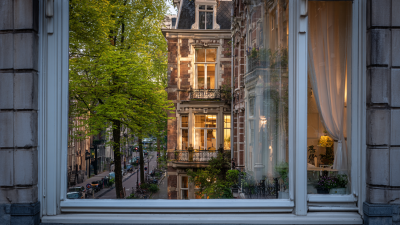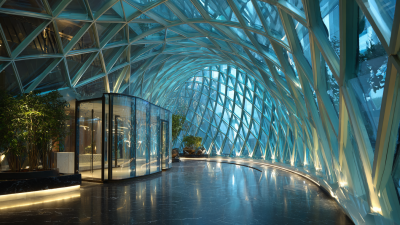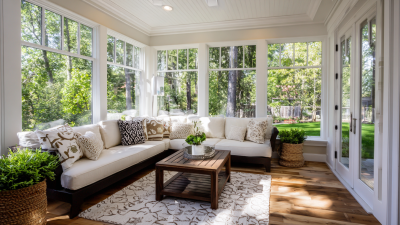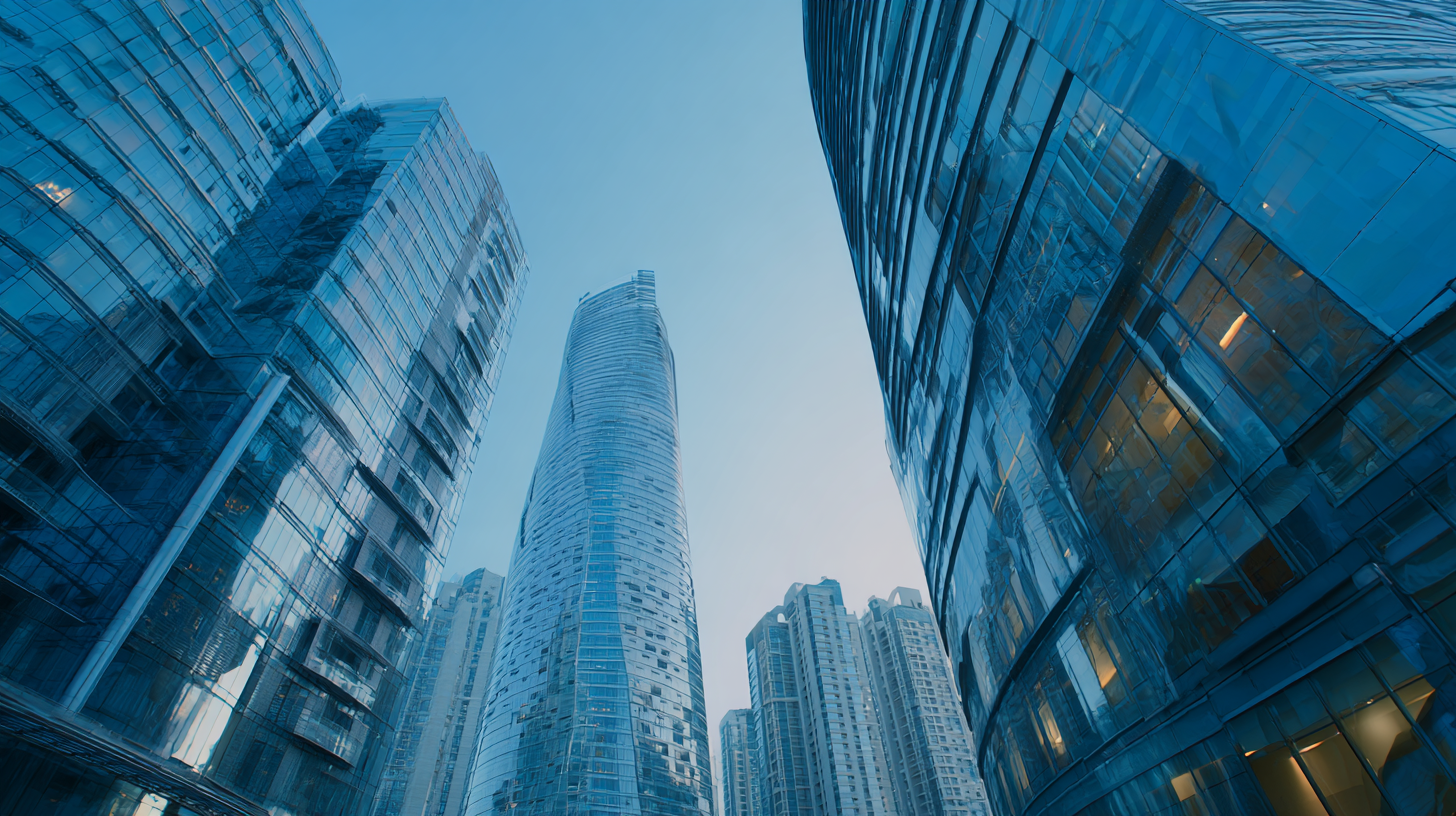 As urban populations continue to rise, the need for sustainable development practices becomes increasingly critical. City glass, a cutting-edge material in green architecture, offers significant advantages for urban environments. According to the Global Sustainable Urban Development Report, the integration of sustainable materials like city glass can reduce energy consumption by up to 30% in buildings. This reflects a growing trend towards environmentally friendly design, which is essential for minimizing urban carbon footprints.
As urban populations continue to rise, the need for sustainable development practices becomes increasingly critical. City glass, a cutting-edge material in green architecture, offers significant advantages for urban environments. According to the Global Sustainable Urban Development Report, the integration of sustainable materials like city glass can reduce energy consumption by up to 30% in buildings. This reflects a growing trend towards environmentally friendly design, which is essential for minimizing urban carbon footprints.
Renowned urban architect Dr. Emily Tran states, "City glass not only enhances aesthetic appeal but also contributes to the overall sustainability of urban spaces." Her insights underscore the dual role of city glass in both enhancing the beauty of cityscapes and improving their environmental performance. By optimizing natural light and reducing energy demands for heating and cooling, city glass proves to be a vital component in the fight against climate change.
In summary, the adoption of city glass not only supports sustainable urban development but also aligns with the principles of green architecture, shaping cities into more livable and environmentally responsible spaces. Embracing these innovative materials is crucial for future urban planning and design, ensuring that cities thrive economically while safeguarding our planet for generations to come.
City glass plays a pivotal role in enhancing urban aesthetics, seamlessly blending functionality with beauty. As cities evolve, the application of glass in modern architecture offers a sleek, contemporary look that appeals to both residents and visitors. Transparent facades not only allow natural light to flood indoor spaces but also create an inviting atmosphere that showcases the city’s vibrancy. This design approach elevates the visual narrative of urban landscapes, promoting a sense of openness and community connection. Moreover, incorporating city glass into public spaces enhances engagement, making areas more welcoming and visually stimulating.
In terms of climate resilience, city glass contributes significantly by improving energy efficiency. Advanced glazing technologies can reduce heat gain in summer while retaining warmth in winter, leading to lower energy consumption for heating and cooling. This adaptive approach not only mitigates the urban heat island effect but also enhances the overall sustainability of buildings. As urban areas face increasing climate challenges, integrating city glass in architectural designs is essential for developing resilient urban environments that prioritize both ecological health and aesthetic appeal. By marrying beauty with sustainability, city glass emerges as a vital component in the pursuit of green architecture.
This bar chart illustrates various benefits of using city glass in urban development, measuring each benefit on a scale of 1 to 10, reflecting its importance in enhancing urban aesthetics and climate resilience.
City glass has emerged as a transformative element in green building practices, showcasing its innovative applications in sustainable urban development. This versatile material not only enhances aesthetic appeal but also contributes significantly to energy efficiency. For instance, the integration of city glass in facades allows for optimized natural daylighting, reducing the reliance on artificial lighting. Various innovations, such as electrochromic glass, allow windows to adjust their tint based on sunlight intensity, minimizing heat gain and improving thermal comfort within urban spaces.
Moreover, city glass plays a crucial role in water management systems. By incorporating rainwater harvesting solutions within glass structures, buildings can utilize this resource for irrigation or other non-potable applications. The transparent nature of city glass promotes visibility and transparency in urban design, facilitating a connection between inhabitants and their environment. Its recyclability further emphasizes its sustainability credentials, supporting the circular economy in construction. As cities strive for greener solutions, the continued exploration of city glass highlights its potential to redefine urban landscapes while promoting ecological balance.

City glass technology is transforming urban landscapes by significantly enhancing energy efficiency and sustainability. According to a report by the International Energy Agency, buildings account for approximately 40% of global energy consumption. By integrating advanced city glass, which features superior insulation and solar control properties, urban developers can reduce heating and cooling demands, leading to energy savings of up to 30%. These innovations not only lower utility bills but also contribute to a reduction in greenhouse gas emissions.
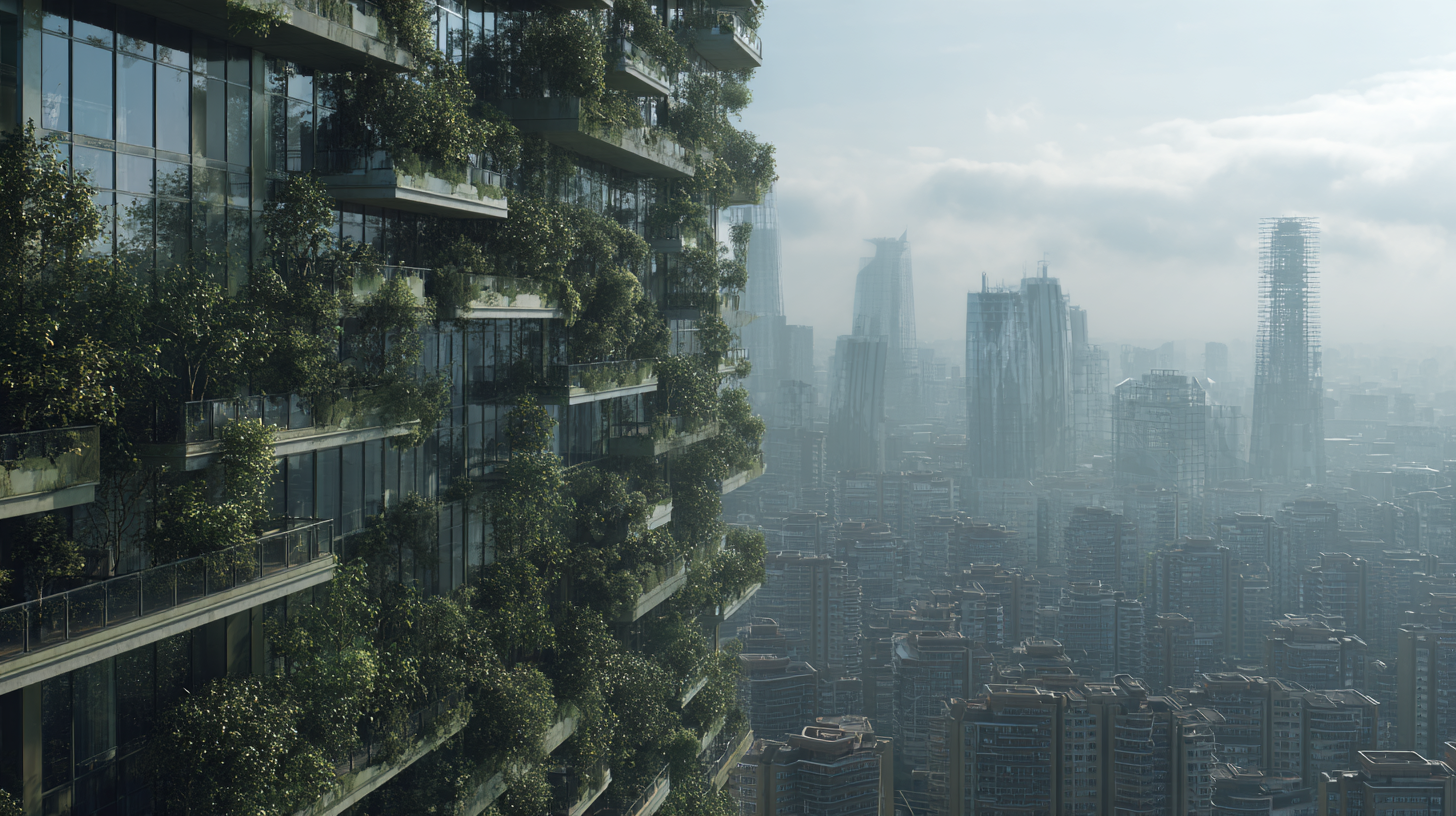
Tips: When considering city glass for urban projects, look for high-performance alternatives with low U-values and high solar heat gain coefficients. This ensures optimal temperature control and enhances comfort for occupants.
Moreover, city glass plays a vital role in promoting green architecture. The use of lightweight, reflective glazing allows structures to harness natural light while minimizing heat absorption, thus reducing reliance on artificial lighting and air conditioning. A study from the U.S. Green Building Council indicated that buildings equipped with high-performance glazing achieve LEED certification more frequently, showcasing the growing demand for sustainable building practices.
Tips: For architects and developers, incorporating city glass can also enhance aesthetic appeal, attracting environmentally conscious consumers and investors alike, leading to increased property values.
City Glass serves not only as an architectural feature but also as a catalyst for community engagement in urban spaces. By incorporating transparent and interactive glass elements into the design of buildings and public areas, cities can create environments that encourage interaction and collaboration among residents. This transparency fosters a sense of openness and inclusion, inviting individuals to connect with their surroundings and with each other. Community-oriented projects utilizing City Glass can transform mundane urban landscapes into vibrant social hubs, where people gather, share ideas, and participate in shared activities.
Moreover, the adaptability of City Glass in sustainable architecture enhances its role in community engagement. The use of glass can promote natural lighting, reduce energy consumption, and provide aesthetically pleasing views of the urban environment. When combined with green spaces or community gardens, glass structures become focal points that draw people to explore their local neighborhoods. Initiatives such as art exhibitions or farmer’s markets held in areas featuring City Glass not only beautify urban spaces but also empower citizens to contribute to the cultural and social fabric of their communities, reinforcing the idea that architecture can play a vital role in fostering civic engagement and sustainability.
As we look towards 2032, the global market for transparent solar cells is projected to reach $89.88 million, with a robust compound annual growth rate (CAGR) of 18.40%. This growth trajectory highlights a significant opportunity for the integration of photovoltaic technology in sustainable architecture, despite some challenges. A recent survey among architects revealed that 68% believe solar components adversely affect building aesthetics, while 57% of developers are concerned about increased costs and safety risks associated with solar installations.
However, the broader context of building-integrated photovoltaics (BIPV) indicates a promising future. The global BIPV market is expected to surge from $23.41 billion in 2025 to an impressive $74.43 billion by 2032, reflecting a CAGR of 17.97%. This shift toward innovative glass systems, including the use of city glass, emphasizes the critical role of aesthetics and functionality in urban development. As trends evolve, the integration of city glass in green architecture will likely offer solutions to align environmental sustainability with the architectural beauty that cities strive for.
